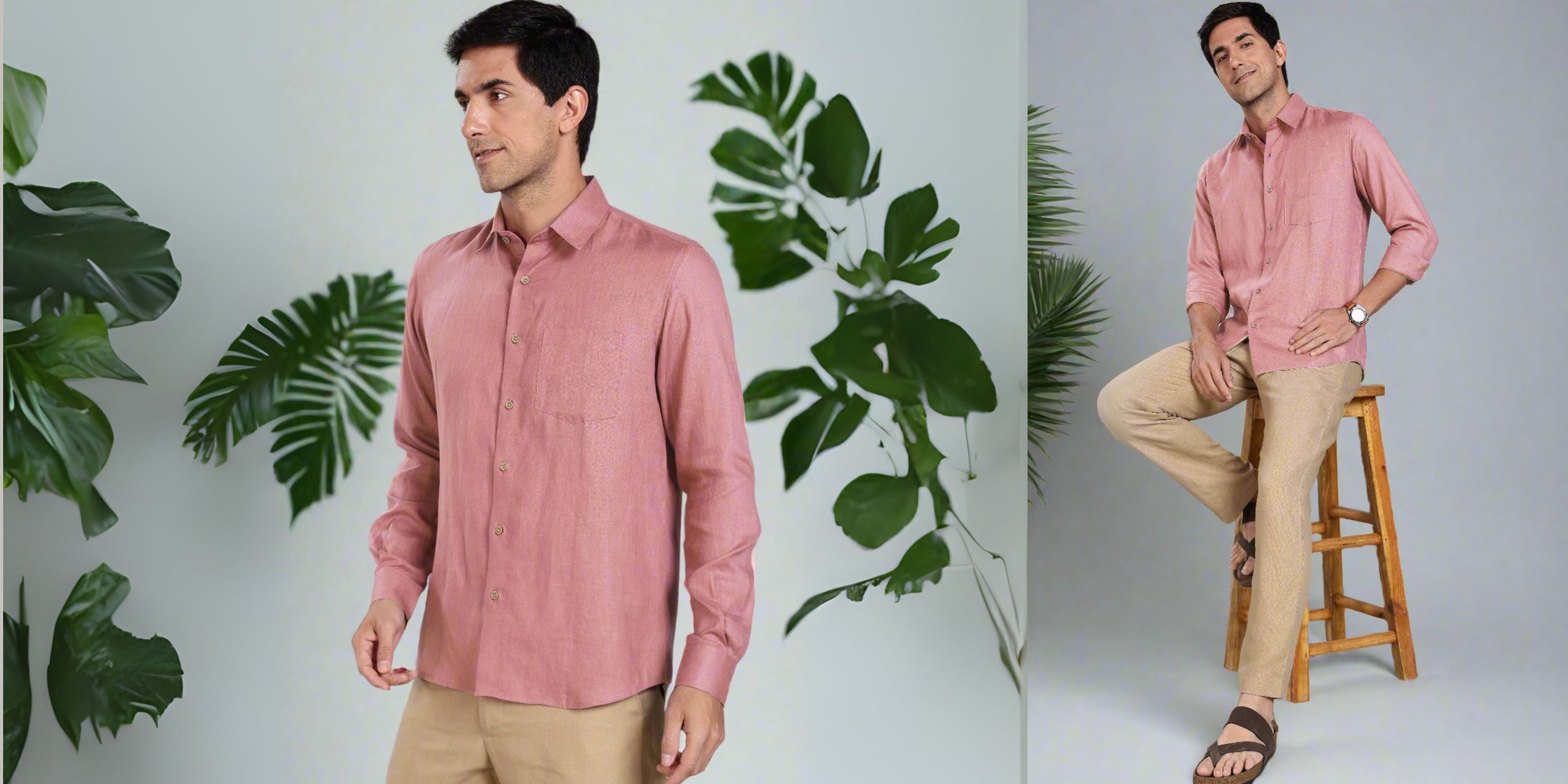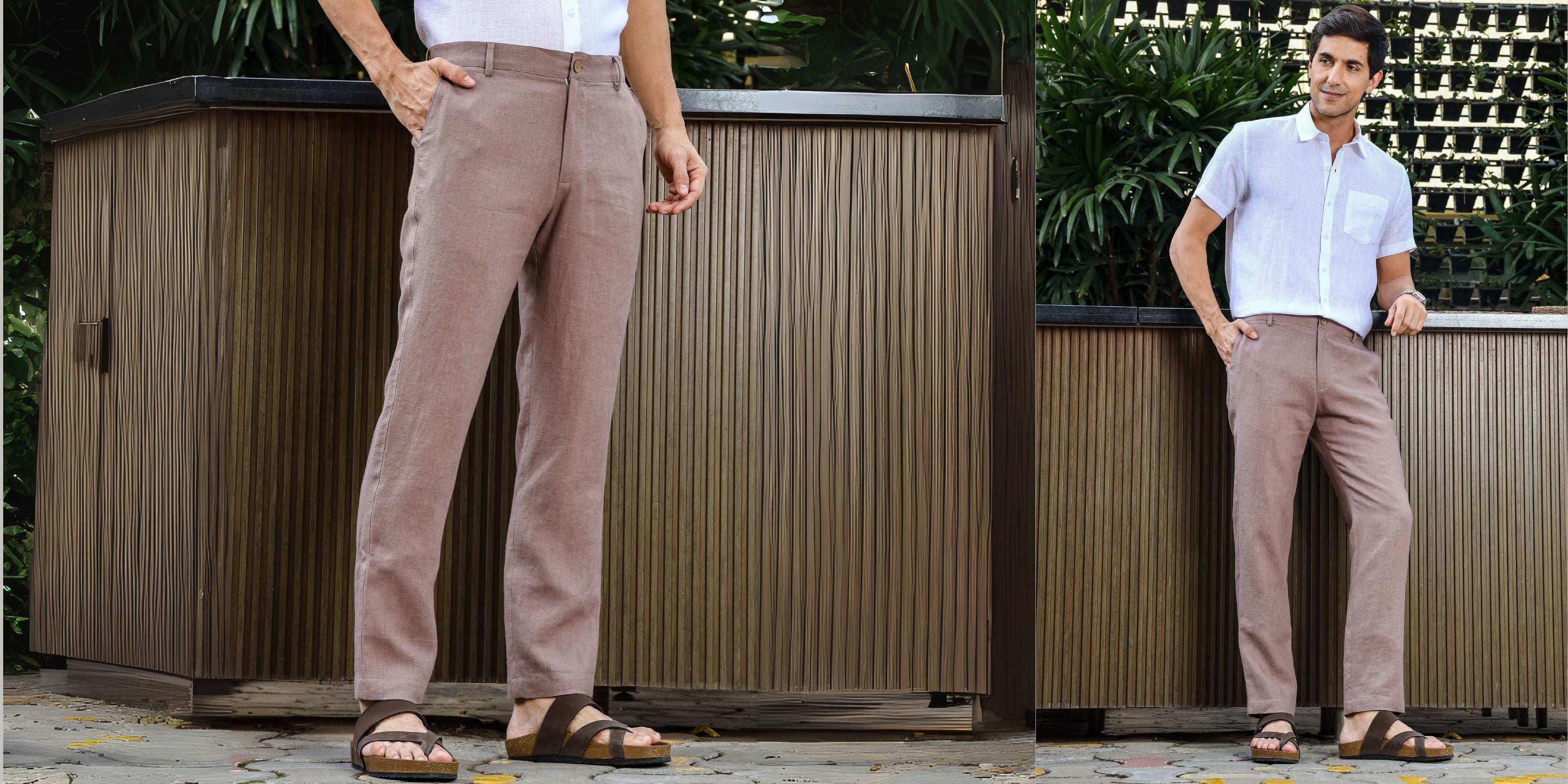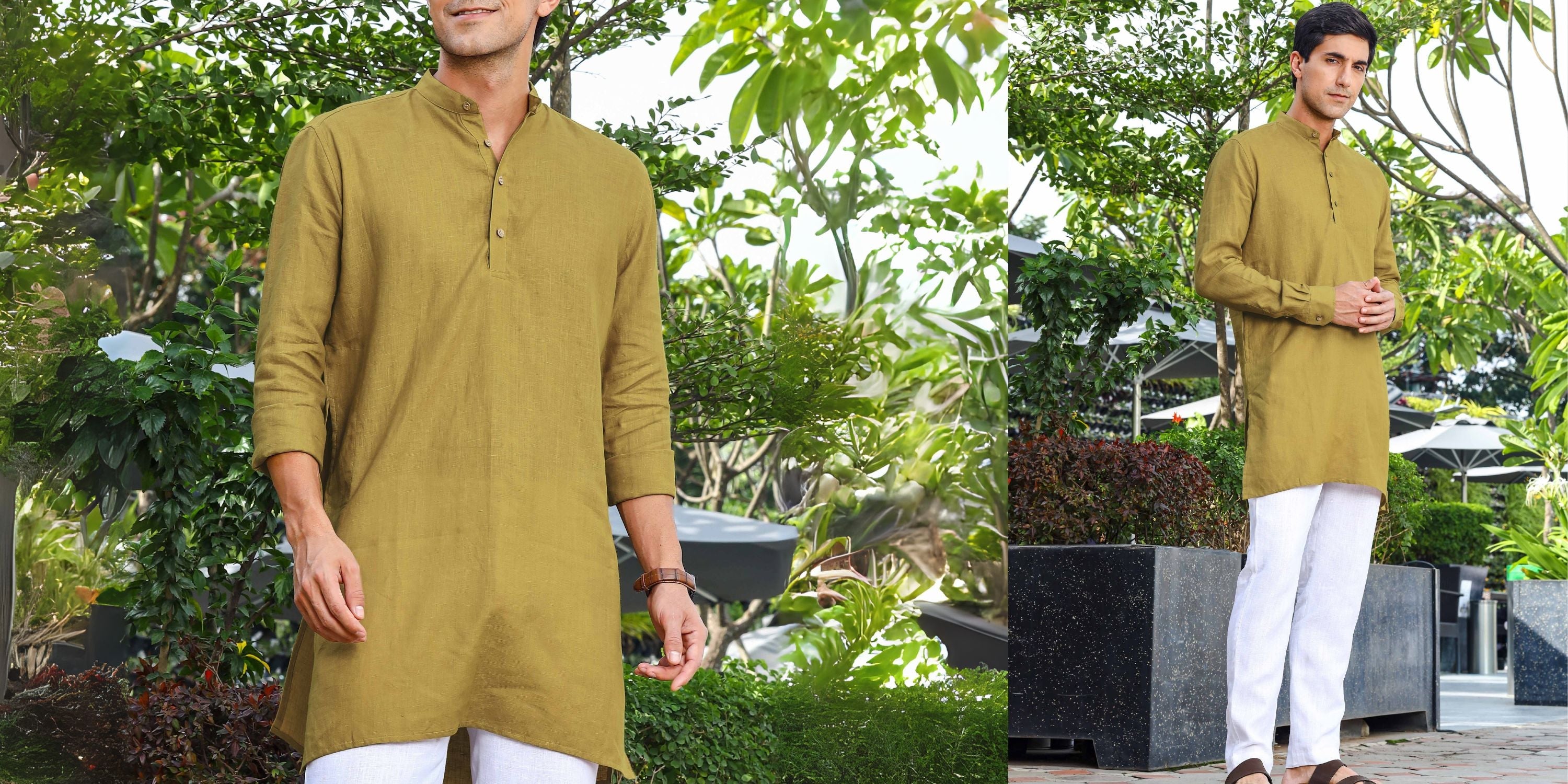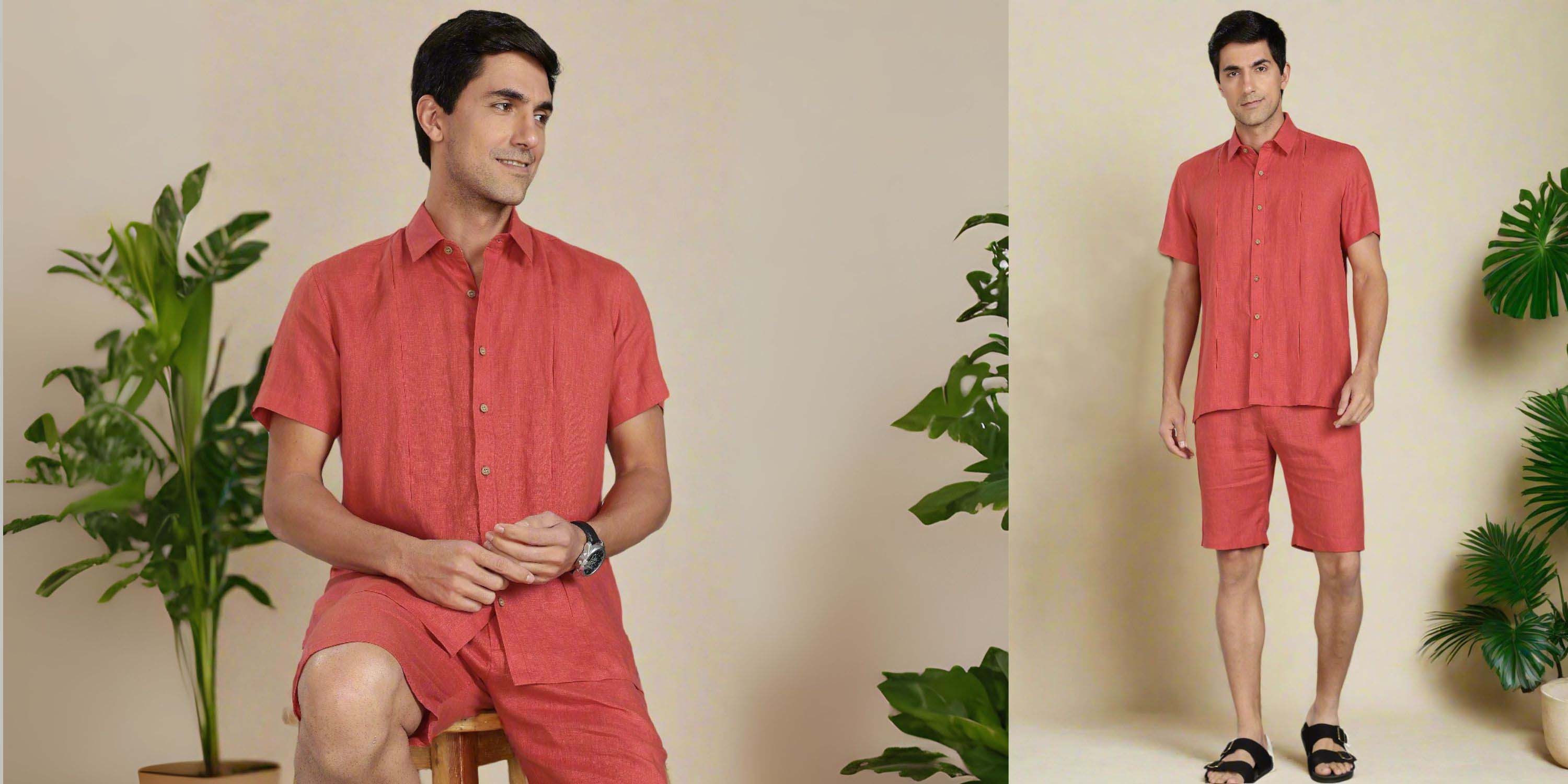Unveiling the Luxury: Why Is Linen So Expensive
Linen is celebrated for its effortless charm, breathability, and heritage of luxury. But with that comes a price point that surprises many shoppers. Whether you're browsing a linen shirt or a summer dress, you might pause and wonder: Why is linen so expensive?
The answer lies in the fabric's complexity both in how it's made and in what it offers. This article explores every layer of value that linen delivers, helping you understand why it commands such a premium in the world of textiles.
The Timeless Appeal of Linen

Linen is more than just a seasonal fashion trend. It’s a fabric that’s deeply woven into history, valued for its comfort, strength, and cultural significance. Used for thousands of years, from the tombs of ancient Egypt to today’s runways and wardrobes, linen is the choice of those who appreciate subtle luxury.
Key qualities that define linen’s unique appeal:
-
Breathability: Linen is naturally breathable due to its hollow fiber structure. It allows heat and moisture to escape, making it ideal for warm, humid conditions. Unlike synthetic fabrics, it helps regulate your body temperature by keeping you cool and dry.
-
Durability: Linen is known for being one of the strongest natural fibers. It doesn’t break down easily, resists stretching, and retains its shape over time. With each wash, linen gets softer, not weaker, which enhances its comfort and lifespan.
-
Eco-Friendliness: Linen comes from the flax plant, a crop that requires less water, fewer chemicals, and no genetically modified seeds. Flax can grow in poor-quality soil and uses every part of the plant, making linen one of the most sustainable fabrics available.
-
Aesthetic Value: Linen has a slightly coarse but elegant weave, giving it a natural texture that speaks of authenticity. It wrinkles naturally, offering a laid-back, lived-in luxury that no synthetic fiber can replicate.
Hypoallergenic Properties: Because it's free of synthetic chemicals and allergens, linen is ideal for those with sensitive skin or allergies. It doesn’t trap bacteria or moisture, making it a hygienic choice for clothing and bedding alike.
Why Is Expensive Linen So Loved?
The price tag of linen isn’t simply about marketing, it’s the direct result of a complex and meticulous production process, limited raw materials, and growing demand for sustainable, long-lasting fashion.

1. Labor-Intensive Production Process
Creating linen starts with the flax plant, which must be cultivated in specific climates such as those found in Belgium, France, and parts of Eastern Europe. The fibers are harvested through a process called retting, where the stalks are soaked in water to naturally separate the fibers. This step alone can take weeks and must be monitored carefully to prevent over-fermentation.
After retting, the flax must be broken, scutched, and hackled, all manual or semi-manual processes that remove unwanted bark and straighten the fibers. Finally, it’s spun into yarn and woven using techniques that require expert craftsmanship. This time-consuming production journey significantly raises the cost of the end product.
2. High-Quality Raw Materials
Not all flax is created equal. The best quality flax is grown in Europe, especially Belgium and northern France, where the climate is ideal for producing long, lustrous, and durable fibers. Longer flax fibers produce stronger, finer, and more consistent yarns, which translates to a higher quality of linen fabric.
This premium raw material comes at a price. Additionally, natural fluctuations in crop yield, weather conditions, and farming costs can impact the supply and increase production costs further.
3. Limited Supply vs. Increasing Demand
Globally, linen represents only a small fraction of textile production compared to cotton or polyester. That’s because flax farming is less industrialized, harder to scale, and dependent on very specific environmental factors.
Meanwhile, as more consumers become aware of sustainability, skin-friendliness, and comfort, the demand for linen continues to grow. This imbalance between limited supply and growing demand naturally elevates its market value.
4. Exceptional Strength and Longevity
Linen is not just comfortable, it's also incredibly durable. In fact, linen is about 30% stronger than cotton, making it more resistant to wear, washing, and time. Unlike fast-fashion fabrics that degrade after a few uses, linen garments can last for years or even decades if properly cared for.
Moreover, linen tends to age gracefully. Its texture softens with use, and the colors often develop a rich patina over time, enhancing the garment's unique character and value. This makes linen a long-term investment rather than a disposable purchase.
5. Sustainable and Ethical Fashion
Linen supports the values of conscious consumers. Its cultivation and production process:
- Requires significantly less water than cotton.
-
Involves minimal pesticide use.
-
Produces little to no waste, since almost every part of the flax plant is used.
-
Results in a biodegradable final product, meaning it returns to the earth naturally when disposed.
Additionally, many high-end linen producers follow ethical labor practices and emphasize transparency in their supply chains. These standards, while admirable, do contribute to higher costs—but they also create a product you can wear with pride.
How Expensive Is Linen, Really?
A typical high-quality linen shirt can cost anywhere from 2 to 4 times more than its cotton counterpart. The actual price depends on factors such as:
-
Origin and grade of the flax
-
Type of weave and thread count
-
Craftsmanship involved in garment construction
-
Brand values and ethical sourcing policies
While the upfront cost may seem high, consider this: linen lasts longer, feels better over time, and has less environmental impact than many other fabrics. It’s a case where the cost is truly justified by the value received.
Discover Premium Linen at Linen Trail
At Linen Trail, we specialize in crafting garments that honor the legacy of linen while embracing modern design and comfort. Our collections for both men and women feature:
-
Lightweight linen shirts perfect for humid summers
-
Tailored trousers that combine elegance and breathability
-
Stylish co-ord sets and everyday staples built to last
We use only top-grade flax, woven and stitched by skilled artisans to ensure every garment delivers exceptional quality. Whether you're new to linen or a lifelong admirer, our pieces offer a perfect blend of luxury, longevity, and lifestyle.
Ready to experience linen done right?Explore our full collection of premium linen clothing Shop now at Linen Trail
Check out Our Collections
White Linen Shirt | Black Linen Shirt | Blue Linen Shirt | Pink Linen Shirt | Sky Blue Linen Shirt | Beige Linen Shirt | Light Blue Linen Shirt | Linen Navy Blue Shirt | Linen Shirt Green | Mens Long Sleeve Linen Shirts | Yellow Linen Shirt | Red Linen Shirt | Half Sleeve Shirt | Linen Jacket Men | Linen Nehru Jacket | Linen Kurta Pajama with Jacket | Linen Kurta for Men | Pure Linen Pants for Men | Pure Linen Trousers Mens
Frequently asked questions
Q1. Why is linen more expensive than cotton?
Linen is costlier because its production is labor-intensive and uses premium flax fibers. It also lasts longer, making it a better long-term investment.
Q2. What makes linen a luxury fabric?
Linen's quality, historical prestige, unique texture, and eco-friendly nature make it a symbol of understated luxury.
Q3. Is linen worth the high price?
Yes. Linen is breathable, durable, hypoallergenic, and improves with age, offering exceptional value over time.
Q4. Does linen wrinkle easily?
Yes. Wrinkling is a natural trait of pure linen, adding to its relaxed and authentic look.
Q5. Why is European linen more expensive?
Flax grown in Belgium and France produces long, high-quality fibers, resulting in stronger and finer linen that commands a premium price.
Q6. Is linen an eco-friendly fabric?
Yes. Linen requires less water and pesticides than cotton, is biodegradable, and supports low-impact farming practices.
Q7. How long does linen last?
Linen garments can last 5 to 10 years or more with proper care, far outlasting many other fabrics.
Q8. Is all linen expensive?
No. Prices vary by quality, source, and craftsmanship. However, premium linen is generally more expensive due to better materials and production methods.
Q9. Can I wash linen at home?
Yes. Wash on a gentle cycle with cold water. Linen softens with each wash and retains its structure well.
Q10. Where can I buy quality linen clothing?
Linen Trail offers ethically made, high-quality linen garments for men and women. Visit linentrail.com to browse the collection.









